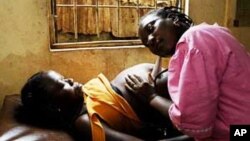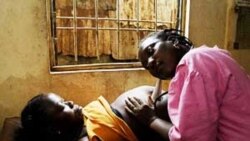The death of a mother is the greatest misfortune for a young family. When a woman dies in childbirth, the newborn’s own chances of survival diminish ten-fold. That child and any siblings are less likely to receive health care and to go to school, and the family as a whole is now more likely to suffer economic hardship.
Yet every two minutes, another mother dies during pregnancy or child birth. More than half of the deaths occur in sub-Saharan Africa.
That is why in June 2012, the United States and the government of Norway partnered with the American College of Obstetricians and Gynecologists, the private sector initiative Merck for Mothers, and the Every Mother Counts campaign to found the Saving Mothers, Giving Life initiative.
Saving Mothers, Giving Life is a five-year initiative that seeks to reduce maternal mortality by half and improve health access in places where women are dying at alarming rates during pregnancy and childbirth. It was initially implemented in four districts each in Uganda and Zambia, with a focus on labor, delivery and the first 48 hours post-partum: the time period in which some two-thirds of maternal deaths and nearly half of infant deaths occur.
Early reports indicated that the program was working, so it was expanded in 2014 to an additional 12 districts in Zambia, and another 6 districts in Uganda.
Now the program has reached its half-way point, and the results are astonishingly good: in Uganda, the institutional maternal mortality rate has fallen by 45 percent since the beginning of the initiative and, thanks to a strong training and educational campaign, by 41 percent at the community level. In Zambia, institutional maternal mortality, meaning in a hospital or a clinic, has fallen by 53 percent in the target districts, and nearly 90 percent of women are now giving birth in a facility, compared to 63 percent at the outset of the initiative.
As a result of this success, the partnership is expanding the program to Nigeria, a country that accounts for 14 percent of the world’s maternal deaths and a quarter of the world’s newborn deaths, with an initial focus on the southeastern state of Cross River.
Surviving childbirth should not be a matter of luck or where you live or how much money you have. Together, we are working to make that a reality.

















